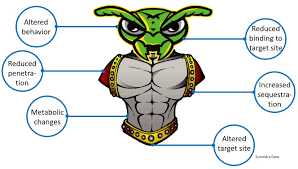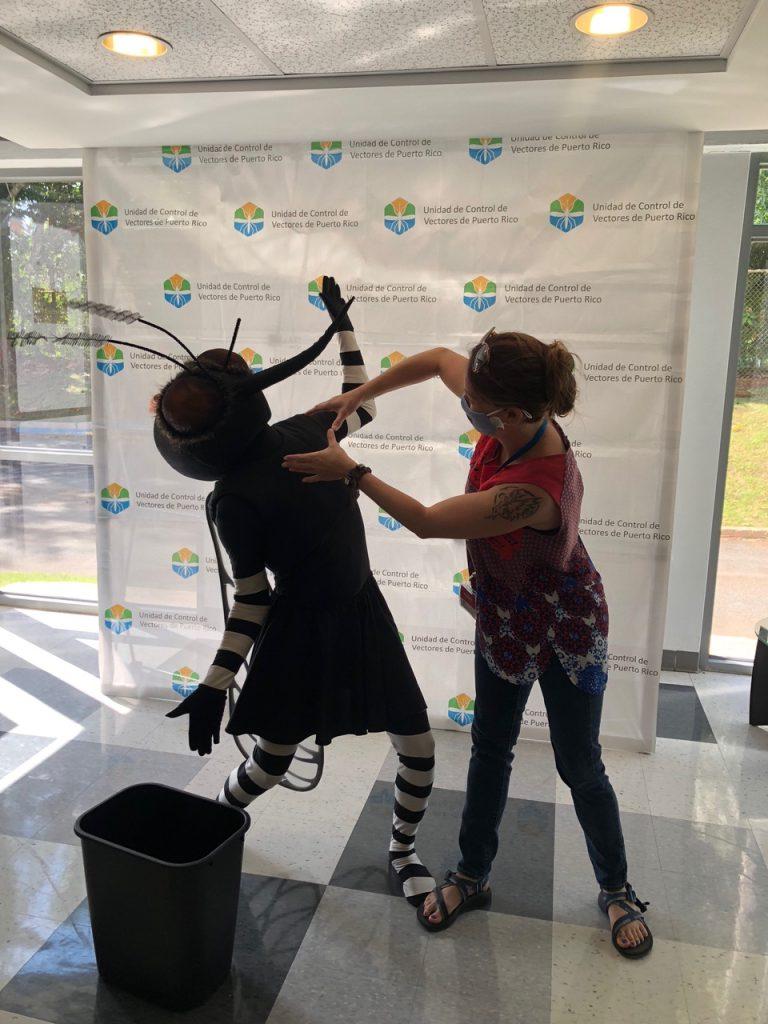Hello Avid Readers! Does it sound great to have a world without pesticides? Your answer to this question likely depends on what you know about pesticides. Generally, a pesticide is a substance that deters or kills an organism that is harming human health, agriculture, the environment, or the economy. This could be a synthetic chemical purchased at the store or a simple mixture of soap and oil DIY style (which may still be a Pesticide ). While it may sound nice to have “A World Without Pesticides”, this could actually result in increases in mosquito vectored disease, reduced crop protection, and harm to the environment from invasive species. This is because pesticides are an integral part of the way we manage pests given the tools we have at our disposal. However, we are at risk of losing some of our pesticide tools. Why might we lose these options? The answer is pesticide resistance.

Pesticide Resistance
Considering pesticides have been used since 2500 BC we are unlikely to lose these options completely. No one is taking away your diatomaceous earth. What I am really calling attention to is, what happens if we lose the option to effectively use synthetic pesticides for large-scale pest control? This is a reality as we are seeing more and more cases of pesticide resistance. Pesticide resistance occurs when a population of a pest becomes less susceptible to a pesticide to the extent that the pesticide can no longer provide control. In other words, the chemical doesn’t kill enough of the pest anymore and it continues to cause problems. Dr. Bultemeier wrote a great introductory article about pesticide resistance and resistance management that you can find linked below. I wanted to reiterate his points and provide some more details specific to insecticide resistance management (IRM).

To explain pesticide resistance, I’ll first define two phrases. The first is Active Ingredients. These are the ingredients in a pesticide product that kill the pest (Ex: Deltamethrin, Cypermethrin, Imidacloprid). The second is the Mode of Action (MoA). This is the physiological disruption at the target site caused by the pesticide. More simply, it’s how the pesticide kills the pest (Ex: Sodium Channel Modulators, Acetylcholinesterase (ACHE) Inhibitors, Nicotinic Acetylcholine Receptor (NACHR) Competitive Modulators). Insects can avoid the disruption by naturally occurring genetic variation that allows them to alter the target site, or by reducing binding to the target site.

Insecticide resistance occurs when products with the same MoA are used over and over again. The picture to the right is an attempt to illustrate this. At first, there is one naturally occurring mosquito that is resistant to the pesticide. The susceptible mosquitos will die, but this one lives and reproduces. Now more of the population is resistant. If the same MoA is used more of the susceptible mosquitos die, but again the resistant individuals reproduce. The final result is a population where the majority of individuals are resistant and this MoA is no longer an effective means of mosquito control.
Modes of Action

What can we do to prevent this? Pesticide applicators should focus on rotating products with different MoAs. The MoAs are very chemistry-based and not all that digestible to your average person. Luckily the Insecticide Resistance Action Committee (IRAC) has made it easy by assigning a number to each mode of action. Sometimes the IRAC number also includes a letter such as 1A. An applicator doesn’t need to worry about the active ingredient or those potentially confusing names of the MoAs (as far as making decisions on rotation). Just consider the IRAC number, and change that up throughout the season. If in the first application an IRAC number 3 is used, the IRAC number for the second application should be something other than 3 such as 9B or 1A. IRAC has a great video to describe this process available in English and Spanish. The links are at the end of the article.
Much like IRAC, there is also a Fungicide Resistance Management Committee (FRAC). If you are an applicator who uses fungicides be aware that the idea of pesticide resistance is not limited to insecticides. FRAC numbers on fungicide labels can be used in the same way as the IRAC numbers to prevent the loss of our fungicidal tools. In fact there is a resistance action committee for rodenticides and herbicides as well. Resistance matters across the board!
Fighting the Good Fight!
Our pesticide tools are vital resources for managing things like insects, fungi, and weeds. There are many great resources out there such as the IRAC and FRAC sites. Additionally, if you are a pesticide applicator in turf there is a UF EDIS document just for you! These sources are linked below. Remember, if you are applying pesticides please consider your options and rotate your MoAs (IRAC or FRAC numbers). A world without pesticides might mean a world without pest management. So be sure to protect these tools, so we can attack our pests rather than them attacking us!

Subscribe to Our Blog
Additional Resources
https://www.frac.info/knowledge-database/videos
https://edis.ifas.ufl.edu/publication/IN714
https://edis.ifas.ufl.edu/publication/PI288
References
Dara, Surendra K. “Insect resistance to biopesticides.” UCANR E-Journal of Entomology and Biologicals (2017).
https://en.wikipedia.org/wiki/History_of_agriculture
 1
1
